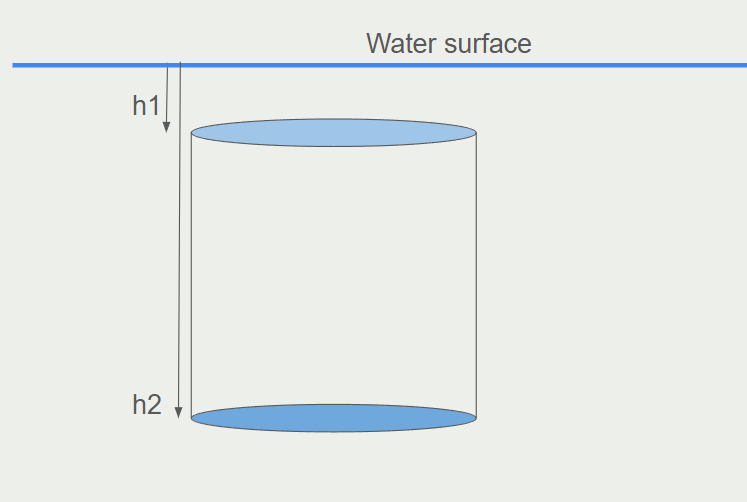Deriving U= ρgV
- Consider a submerged object with a top surface at a depth h₁ and a bottom surface at a depth h₂. The pressure at the top surface, p₁, is ρgh₁, and the pressure at the bottom surface, p₂, is ρgh₂.
- The force due to pressure is given by F = pA, where A is the area.
- The upward force on the bottom of the object (F₂) is p₂A = ρgh₂A, while the downward force on the top of the object (F₁) is p₁A = ρgh₁A.
- The net upward force, which is the upthrust (U), is given by the difference between these forces:
- U = F₂ - F₁
- U = ρgh₂A - ρgh₁A
- The height of the object is the difference in depth, or h₂ - h₁. If the height of the object is h, then h = h₂ - h₁.
- Thus, the upthrust can be written as:
- U = ρg(h₂ - h₁)A
- U = ρghA
- Since V = Ah, U = ρgV
